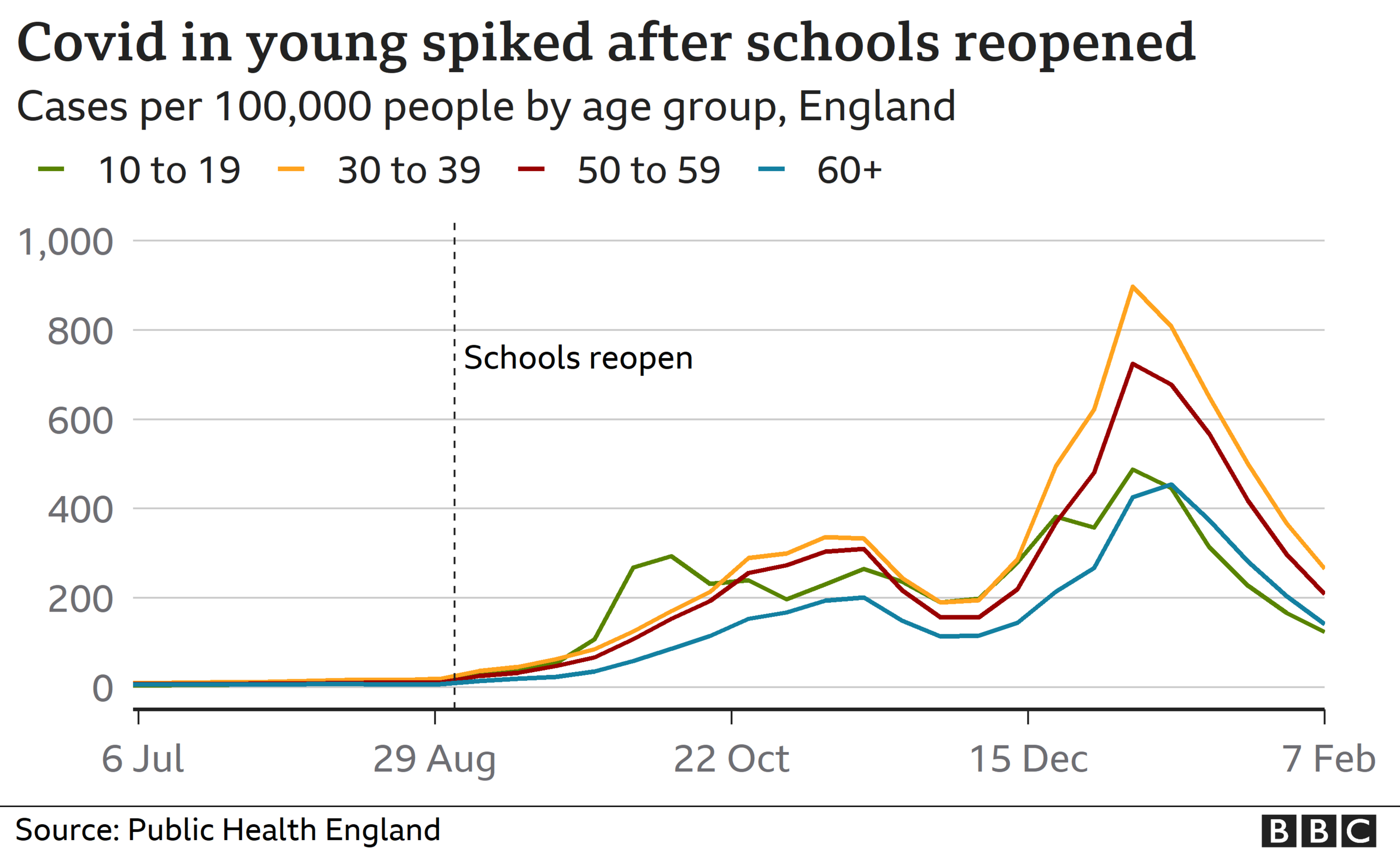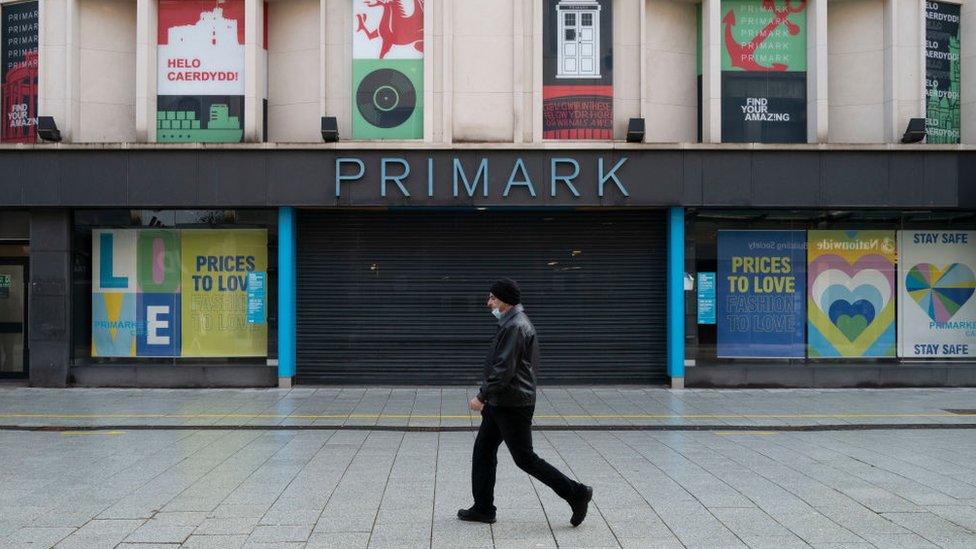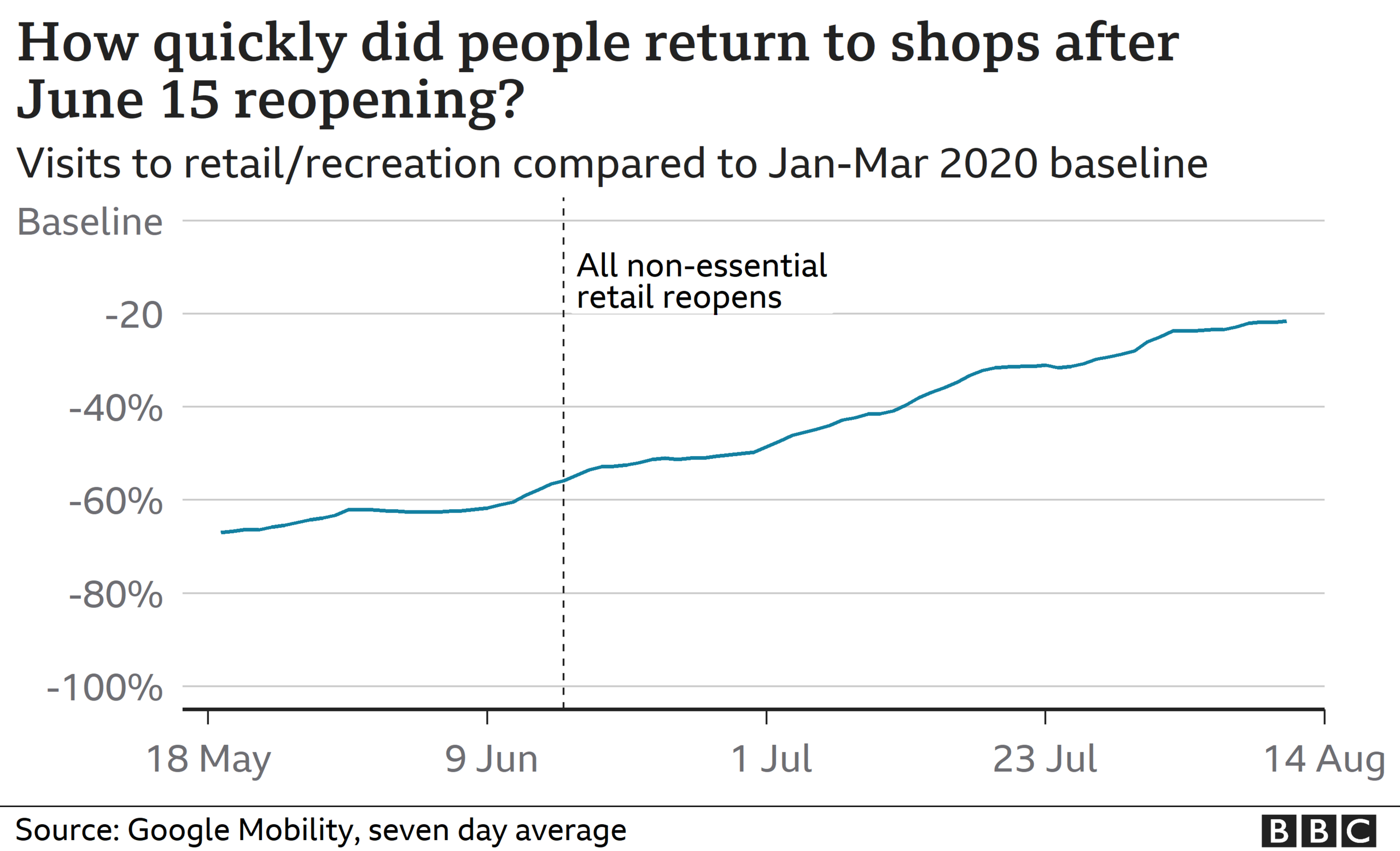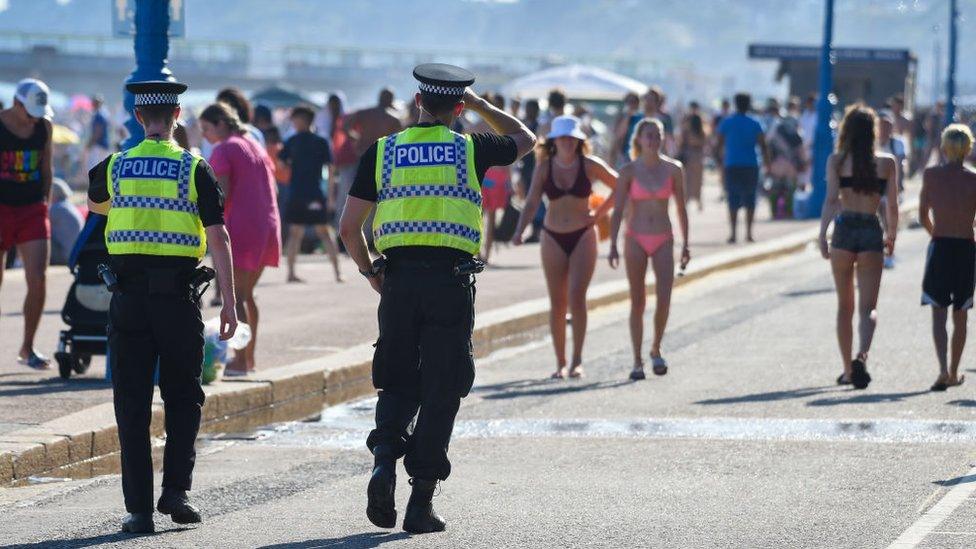Lockdown review: What are the risks of schools, pubs and shops reopening?
- Published

The Prime Minister Boris Johnson has announced a "roadmap" to lift England's lockdown restrictions in stages - starting with the reopening of schools. Scotland's First Minister Nicola Sturgeon has said there will be a "progressive easing" of its rules.
Over the course of the past year, the Scientific Advisory Group for Emergencies (Sage) has advised the authorities on the pandemic, assessing the risks of transmission of coronavirus in many areas of daily life.
This advice looks at how closing or opening certain sectors could affect its spread - although with varying degrees of confidence, as the precise impact of each measure is difficult to assess.
Scientists are still trying to understand the full impact of the vaccines and the new variants of coronavirus. These have not been factored in yet in the assessments from Sage, which have been publicly released.
We have looked at what they say about the risks in a number of areas.
Schools
Sage has said (with "moderate confidence") that schools have a "moderate" impact on transmission.
The phased opening of schools has already started in Wales and Scotland. In England, the prime minister says all schools will reopen on March 8.
But the role schools have played in the spread of the virus is not clear-cut.
One report from Sage notes, perhaps unsurprisingly, that cases were highest among children when schools fully reopened in September 2020.

There is no clear evidence that schools are the driving force behind broader community spikes.
"It is difficult to quantify the size of this effect and it remains difficult to quantify the level of transmission taking place specifically within schools compared to other settings," Sage reported in November, external.
Its evidence suggests that primary school children, external are "less susceptible to infection than adults," but the risk increases among older children.
Sage concluded that closing secondary schools, external was "more effective" than closing primary schools due to this.
In fact, some recent research from the University of Warwick concludes that there is no hard evidence that primary schools spread the virus.

When announcing the reopening of schools in Scotland, First Minister Nicola Sturgeon said: "The key risk in reopening schools is not transmission of the virus within schools; instead, the risk comes from the increased contact that the reopening might spark among the wider adult population."
This could include parents gathering at the school gates, or people returning to work.
All recent Sage documents agree that the risk of serious illness to children is very small compared to adults over 60.
Outdoor gatherings
Sage has said (with "high confidence") that outdoor gatherings have a low impact on transmission.
Wales is relaxing its outdoor rules and small outdoor gatherings will be allowed in England from March 29 and in Scotland from March 15.
Currently, you are only able to exercise outdoors with one other person.

Sage has long been confident that small outdoor gatherings have a lower impact, external on transmission because coronavirus "does not persist in well-ventilated outdoor areas for long" and the virus's "survival on surfaces is reduced under UV light [the sun]".
But despite being considered low-risk, the virus is still able to spread outdoors. This is why when a lot of people had the virus in January, the government stopped gatherings outside.
And, as ever, the closer you are to someone - for example, standing close to them and chatting - the higher the chance of droplets passing between you. So social distancing measures will still be encouraged.

Non-essential retail
Sage has said (with "low-moderate" confidence) that retail has a low impact on transmission.
Most non-essential retail, such as clothes stores, is due to reopen in England from April 12 - at the earliest.
People in Scotland will need to wait until at least the end of April for this.
Before the first lockdown was lifted, Sage recommended that, external "opening non-essential retail safely would require a significant effort to ensure that environments are appropriate to minimise transmission (for example social distancing and hygiene measures, ventilation)".
This follows the idea that contacts between people are more dangerous indoors as particles in the air are replaced less slowly with clean air.
Sage estimated that opening non-essential retail such as clothes shops would see a 10% increase in indoor contacts between people.

This is why when shops reopened we saw crowd control, one-way systems and designated spaces for people to queue.
Sage thinks that in general non-essential retail, external is "low risk" when these measures are in place and masks are worn.
But once again, if coronavirus is already highly prevalent in a community as it was in December, these "low risk" actions can become riskier as more people have the virus to begin with.
Pubs and restaurants
Sage has said (with "moderate confidence") that hospitality has a moderate impact on transmission.
Without restrictions, the hospitality sector can see people from different households mixing indoors for long periods of time.
Throughout the pandemic, Sage has said:
"Smaller gatherings such as bars and nightclubs are higher risk as you can be in closer contact with others, external"
"Japan, China, South Korea, and Indonesia noted that their largest super-spreading events, external originated from pubs, clubs, restaurants, gyms and wedding venues"
"The general picture in the UK (and overseas) is that it has only been possible to get R consistently below 1 in places where there have been substantial restrictions on hospitality."
Sage has also noted that alcohol can have an impact on people following social distancing measures, external.

Because of these risks, hospitality is being opened up in stages.
On April 12 - at the earliest - customers in England will be able to drink or eat outside.
"Allowing customers to sit outside only [is] likely to be much lower risk," Sage reports.
This will be followed by groups being allowed to meet indoors as early as May 17.
Another restriction previously implemented in England was a 10pm closure for hospitality, but as Reality Check has previously reported, the evidence-base for this was minimal. This curfew has now been scrapped.
People will need to wait until at least the end of April for hospitality to open in Scotland.
Holiday homes and rentals
Sage has not issued specific advice on the risk of transmission in this sector.
Self-catering accommodation or holiday lets will be allowed from April 12, a full month before other types of holiday accommodation. This hasn't been announced in Scotland.
In the past, Sage has briefly mentioned the need for greater understanding of "travel patterns and existing levels of seeding (or spreading from one region to another)" before making conclusions on restricting travel between UK nations and between regions within them.

Gatherings on Bournemouth beach caused controversy last year
Last year, Reality Check looked at whether large gatherings of tourists on Bournemouth beach had an impact on case numbers, but found no evidence of it leading to a spike.


